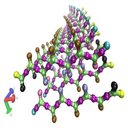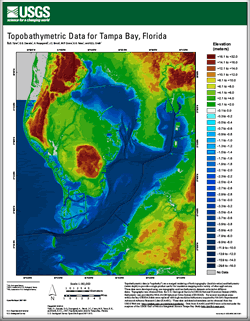
Moltemplate files (LT files) share the same file format and syntax structure as LAMMPS DATA files and INPUT scripts.Ĥ.1 Simulating a box of water using moltemplate and LAMMPSįigure 1: Coordinates of a single water molecule in our example. (The VMD \solvate" plugin may also be helpful.) The PACKMOL program is useful for generating coordinates of dense heterogeneous mixtures of molecules, which can be read by moltemplate.

VMD and topotools are also useful for visualizing the data files created by moltemplate.sh (See section 4.3.) These files can then be converted to \LT" format using the \ltemplify.py" utility. The VMD topotools plugin is useful for converting PDB files into LAMMPS format.
#Vmd topotools manual#
( Some additional manual editing may be required. Note: The "full" atom style was used in this example, but otherLAMMPS atom styles are supported, including hybrid styles.)Įither of these commands will construct a LAMMPS data file and a LAMMPS input script (and possibly one or more auxiliary input files), which can be directly run in LAMMPS with minimal editing.ġ.2 Converting LAMMPS input/data files to LT filesĮxisting LAMMPS input/data files can be converted into \.LT" files using the \ltemplify.py" utility. (PDB-files and other coordinate formats are also supported. In the second example coordinates for the atoms are read from an XYZ-file, and then invokes VMD to visualizethe system just created. In the first example, the coordinates of the atoms in the system are built from commands inside the "system.lt" file. Moltemplate.sh -xyz coords.xyz -atomstyle "full" -vmd system.lt Moltemplate.sh -atomstyle "full" system.lt The moltemplate.sh program converts LT-files (which contain molecule definitions) into complete LAMMPS input-scripts and data-files: However they still have the freedom to easily customize individual interactions when needed.ġ.1 Converting LT files to LAMMPS input/data files

(With help, more popular force-fields can be converted.) This way moltemplate users can build a molecule by specifying only a list of atoms in the molecule and the bonds connecting them. Popular force-fields such as AMBER GAFF and OPLS-AA have been converted into LT format, allowing users to quickly create molecules using moltemplate. (These molecules can be used to build even larger molecules.) Once built, individual molecules and subunits can be customized (atoms and bonds, and subunits can be inserted, moved, deleted and/or replaced). Moltemplate can then duplicate the molecule, customize it, and use it as a building-block for constructing larger, more complex molecules. LT files are templates containing all of the text relevant to a particular molecule (including coordinates, bond-topology, angles, force-field parameters, constraints, groups and fixes). (See section 2.)Ī simple file format has been created to store molecule definitions and force-fields (the LAMMPS-template format, LT). Downloading these examples is highly recommended.

#Vmd topotools how to#
However numerous examples and README files are available to demonstrate how to run these kinds of simulations. Warning: This manual does not explain how to run “active-matter" simulations or use all-atom force fields. Moltemplate Manual-(1)(Andrew Jewett, Jensen Lab (Caltech), Shea Lab (UCSB))


 0 kommentar(er)
0 kommentar(er)
